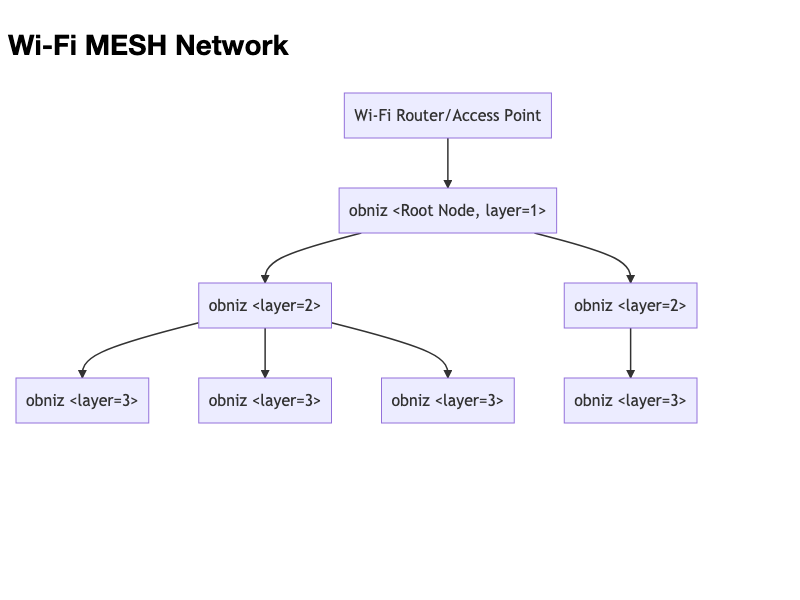Wi-Fi MESH allows devices to communicate with each other and automatically create a network that can communicate with each other. In order to create the same network, the following settings must be in place.
- SSID and password of the Wi-Fi access point, and BSSID if specified.
- MESH ID
Devices with the same settings will automatically create a mesh network, but devices with different settings will not recognize each other, even if they are close to each other.
RootNode
A mesh network is a network of devices that can communicate with each other, but the Root Node is the only one in the network that can connect to Wi-Fi and communicate with the Internet.
There can be only one Root Node in a mesh network.
The Root Node acts as a proxy and does the packet routing in the mesh network. It propagates the data received from the Internet to other devices and forwards the data coming from the devices to the obnizCloud.
By working with obnizCloud, RootNode makes it seem as if each device is directly connected to Wi-Fi instead of MESH, and provides APIs to users.
We will provide APIs to users.

Construction flow
- If no network is established, use radio waves (Wi-Fi) to determine each other's location.
- the device closest to the Wi-Fi router/access point (Root Node) is determined among the members who know each other.
- As well as determining the Root Node, we also determine who will be connected to where and how they will be routed to the Root Node. 4.
- After the decision is made, the Root Node connects to the obnizCloud via the Internet. 5.
- After the Root Node comes online, the devices in each network connect to the obnizCloud via a pseudo-internet connection and come online respectively.

Layers
In Wi-Fi MESH, devices have a parent-child relationship and a cyclical network is not built.
Therefore, the Root Node is called Layer=1, the devices connected to the Root Node are called Layer=2, the devices connected to Layer=2 are called Layer=3, etc. There are up to 6 layers.

In addition, the number of child nodes connected to one device is 5.
So, if you have 6 devices in total
- 1 device is a RootNode and the remaining 5 devices are all connected to the RootNode with Layer=2
- one device is a RootNode and the rest are connected in a bead-like pattern to Layer=6
- other
These connection patterns are automatically determined based on the location of each other.
Device authentication
Each device communicates with the obniz cloud through a pseudo-internet connection.
Authentication of devices will also be done as usual.
Therefore, if the number of devices in the mesh network is large, it may take a lot of time for everything to come online even after the mesh network has been built.